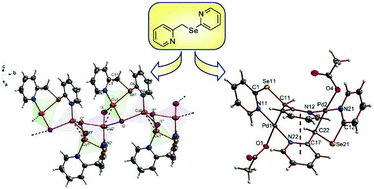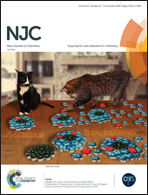Synthesis and structural chemistry of CoII, CuII, CuI and PdII complexes containing a flexible monoselenoether ligand†
Abstract
Monoselenoether ligand [PySeCH2Py] (L) reacts with CoCl2, CuCl2, CuI and Pd(OAc)2 resulting in the formation of molecular or polymeric complexes. The synthesis and structural elucidation of the complexes [CoCl2(L)] (1), [Cu2Cl4(L)2] (2a), [CuCl2(L)] (2b), [Cu2Cl2(PySe)2] (2c), [Cu(2-PyCOO)2] (2d), [Cu2I2(L)2] (3), [Cu2I2(L)]n (4) and [Pd2(CH3COO)2(PySeCHPy)2]·7H2O (5) demonstrate the versatility of this class of pyridylselenium ligands. For all compounds, the ligand offers N and/or Se atoms as donors and, in the case of 5, the ligand also builds C–Pd bonds to generate a cyclometallated palladium(II) complex.



 Please wait while we load your content...
Please wait while we load your content...